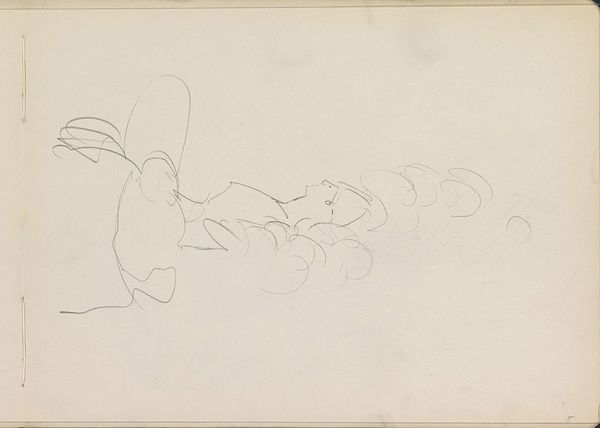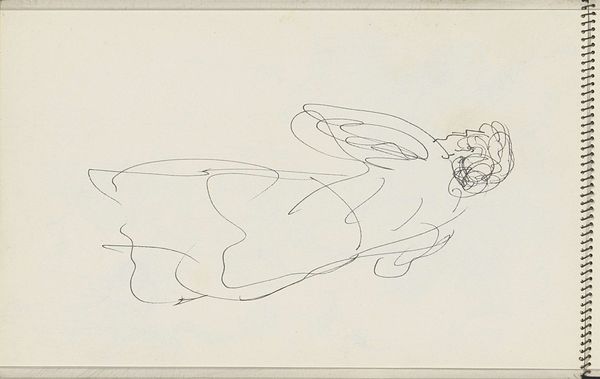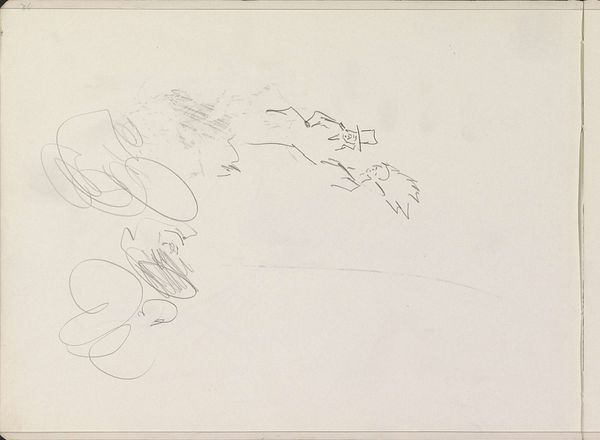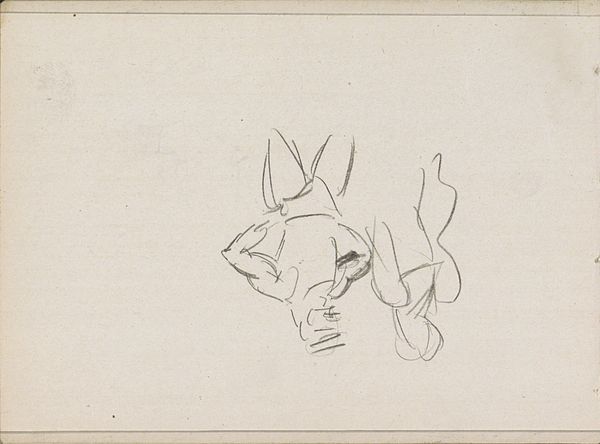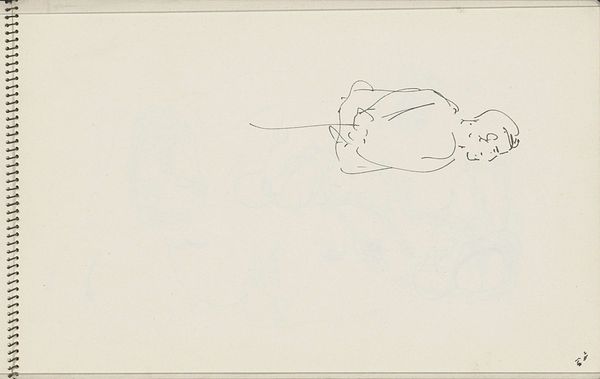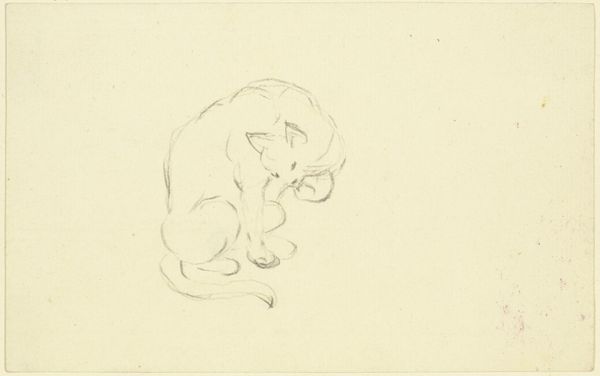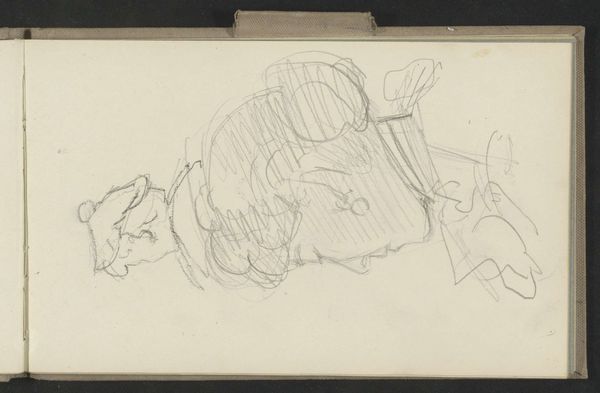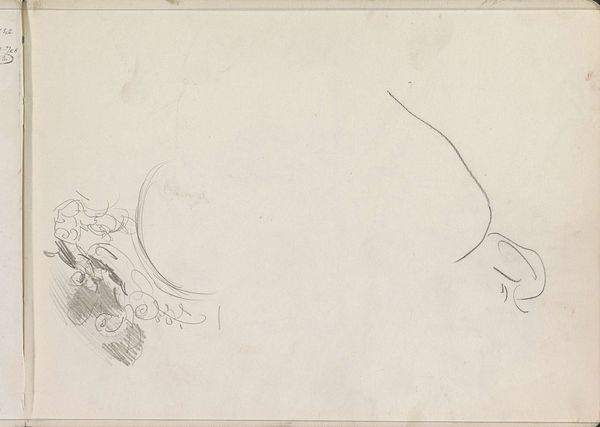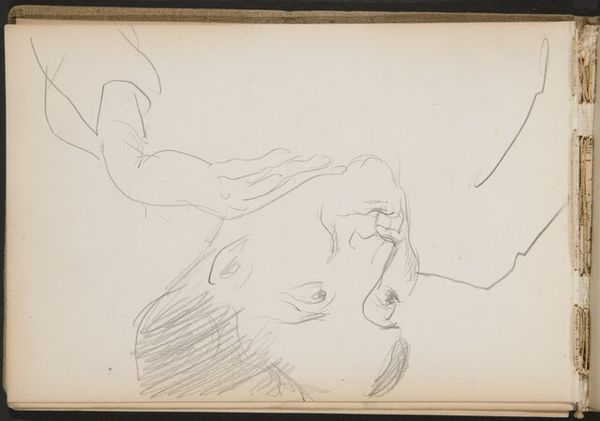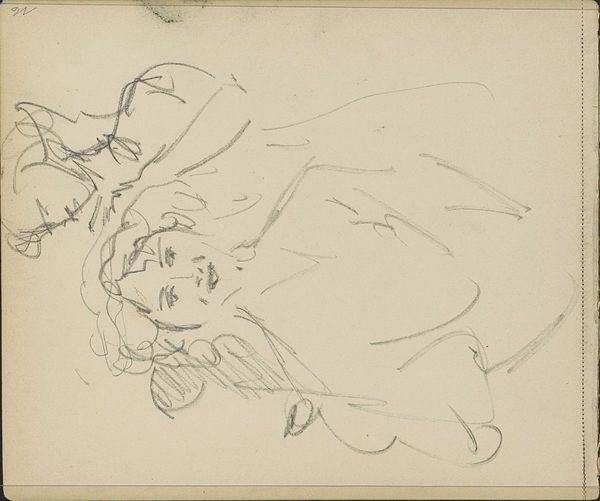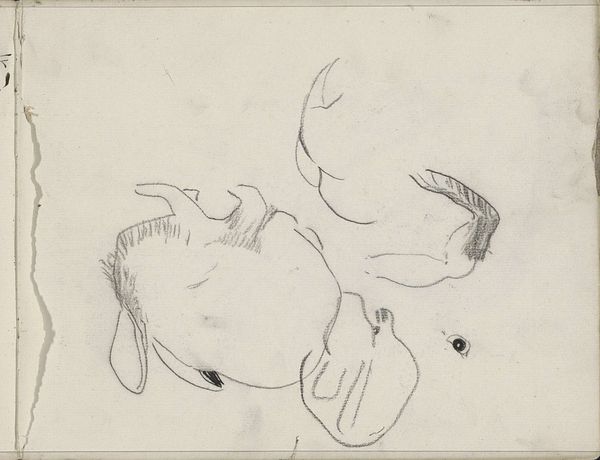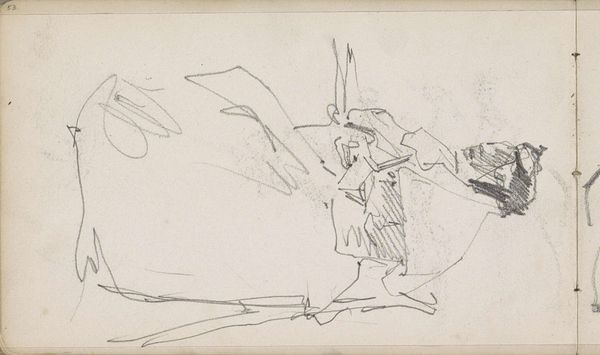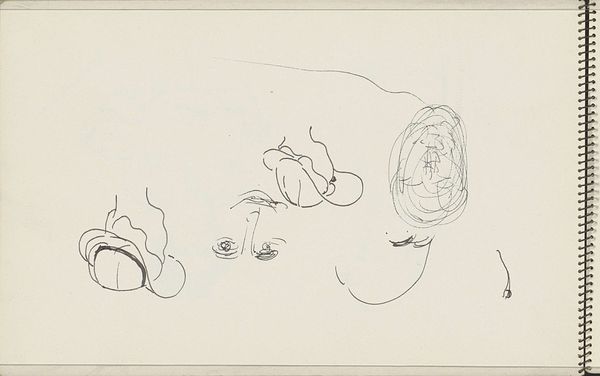
drawing, pencil
portrait
drawing
figuration
pencil
Copyright: Rijks Museum: Open Domain
Editor: So, this is "Vrouwenhoofd met hoofdtooi," or "Woman's Head with Headdress," by Isaac Israels, probably created sometime between 1915 and 1925. It's a pencil drawing, and you can see it at the Rijksmuseum. What strikes me most is how unfinished it feels, like a fleeting thought captured on paper. What do you see in it? Curator: Indeed. Observe how Israels uses a limited tonal range, achieving depth solely through line and varying pencil pressure. The contour lines, some hesitant and broken, others flowing with assurance, describe not only the form but also imply a sense of movement. Consider the empty space, a deliberate void that serves to isolate and emphasize the subject, drawing the eye to the concentration of lines that form the woman’s face and headdress. Editor: It almost feels like a study for a larger work, or maybe an improvisation. I'm drawn to the contrast between the detailed face and the more abstract lines suggesting the headdress. Curator: Precisely. Notice the tension created by this contrast. The detailed rendering of the eyes, for instance, anchors the composition and gives the figure a sense of presence, while the loosely sketched headdress introduces an element of dynamic energy, pushing against the boundaries of conventional portraiture. Consider, too, the materiality of the work. The tooth of the paper, though only faintly visible, contributes to the overall texture and feeling of immediacy. What inferences do you draw from it? Editor: I guess it brings out the character, the details. But does focusing only on the elements inside the piece take away any outside knowledge that could explain more about it? Curator: On the contrary, the structural elements themselves embody meaning. We aren't ignoring external context; rather, we are allowing the work's internal logic to guide our understanding. The method mirrors the madness in this sense. Editor: I see what you mean, it reveals its meaning without depending too much on what it’s referencing or trying to say with any grand message. Curator: Precisely, a harmonious accord can often be realized. A work must present its formal structure clearly before further investigation will reveal contextually significant substance.
Comments
No comments
Be the first to comment and join the conversation on the ultimate creative platform.
